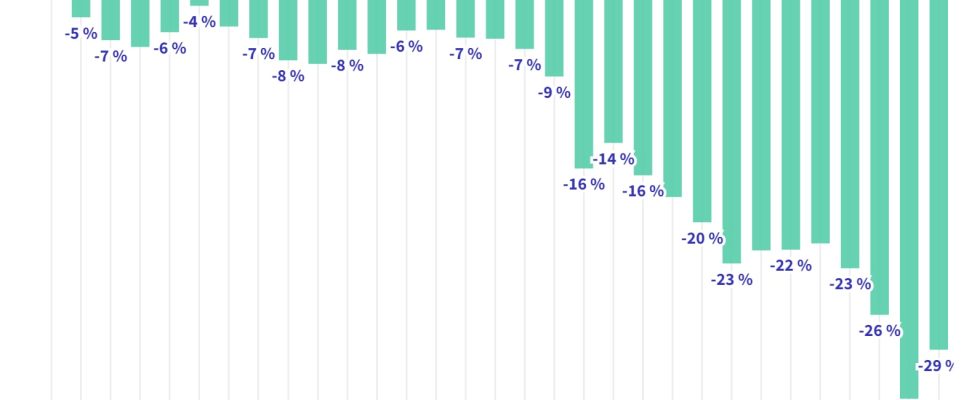The announcement risks worsening tensions between farmers and the European Union. The European Commission is due to reveal this Tuesday February 6 its recommendations for a next objective of reducing greenhouse gases (GHG) by 2040.
Concretely, for the Commission it is a question of proposing an intermediate objective between its two other climate commitments: a 55% reduction in GHG emissions by 2030 (compared to 1990), and carbon neutrality hoped for by 2050. future European Commission, which will be formed after the European elections, will have to present a detailed plan for reducing emissions in the 27 EU countries to be achieved by 2040, before submitting it to the Member States and MEPs of the Parliament in the form of a a legislative proposal in the fall.
According to working documents consulted by AFP, the Commission could favor a reduction of 90%, close to the “90-95%” recommended by the European Scientific Advisory Council. Ambitious commitments, but still far from being achieved, if we base ourselves on the current trajectory. Between 1990 and 2021, GHG emissions from the 27 Member States fell by 29%, according to the European Environment Agency (EEA).
The European Union will therefore have to accelerate the pace of reducing its GHG emissions, including in agriculture. While several of its member states are affected by angry farmers’ movements, particularly against European regulations deemed complex and unrealistic, the agricultural sector remains responsible for 11% of the Union’s emissions.
The announcement of a 90% GHG reduction objective by 2040 would therefore risk fueling the discontent: according to certain scenarios published in mid-2023 by the EU, the institution would consider halving the demand for livestock , and up to 60% the use of nitrogen fertilizers, to respect such a commitment.
